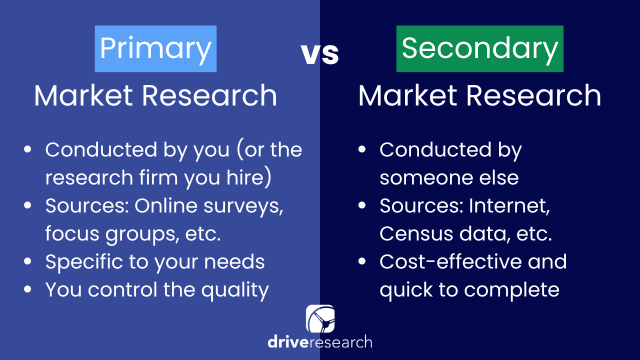
Do you know who your target market is? Do you “know” your target market? What are their demographics, preferences, and buying behaviors?
Without a clear understanding of this, it can be challenging to create products and marketing strategies that resonate with customers.
In today’s ever changing business environment, it is more important than ever to know who your target market is and how to reach them effectively.
This blog will explore what a target market analysis is, why it’s important, and how to conduct one.
What is a Target Market Analysis?
A target market analysis is a type of market research that produces demographic, behavioral, consumer expenditure, and index scores on specific geographies (i.e., ZIP Code, county, DMA, state, etc.) or population segments (i.e., generation, gender, ethnicity, household income, etc.).

Importance of Conducting a Target Market Analysis
Organizations conduct a target market analysis to gain a better understanding of the profile of consumers in their current or planned expansion markets. It can determine whether a market is attractive or not for a concept, from both a current and forward-looking perspective.
By understanding their target market, organizations can more confidently invest and plan the appropriate target marketing strategies to reach this audience.
How to Identify Your Target Market
Before you can begin analyzing your target market though, you have to know who your target market is!
There are several research methods to help you identify which demographic segment(s) make up your target audience.
Customer Surveys
Conducting a customer survey will help you determine the segment(s) of your customer base better.
For example, you might learn that your Gen X customers are the most loyal or female customers spend the most per visit.
More specifically, you could determine which customer segment(s) would be most interested in a new product or concept. Knowing this data will allow you to explore these audiences more in-depth during future studies.
Learn more from our Guide to Conducting Customer Surveys.
Market Surveys
Similar to customer surveys, market survey research can also be used to identify your target market.
For example, you conduct a general population survey with 1000 consumers and discover key demographic insights such as…
- 3 in 4 Gen Z consumers buy products online or through a mobile app
- Females and higher-income households are more likely to shop in-store because of a perceived improvement in product quality
These insights will help you confirm which group(s) are your intended audience and provide the building blocks for further research.
Competitive Analysis
A competitive analysis will examine data from primary and/or secondary data sources to identify target audiences.
Primary data sources could include online surveys, mystery shopping studies, or in-depth interviews. while secondary data sources could include competitor websites, news articles, press releases, or whitepapers.

A competitive analysis will measure how key competitors in your industry compare in terms of brand awareness, usage, satisfaction, pricing behaviors, etc.
In most cases, this data can be analyzed against various demographic segments (i.e., age, gender, ethnicity, household income, etc.).
This can present where the potential opportunities are within the overall market.
For example, a competitive analysis survey finds that males aged 18 to 34 are more likely to spend the most on a product but have a lower overall satisfaction among each of the companies tested.
How to Conduct a Target Market Analysis
While target market analyses can vary, most are usually conducted in phases.
No matter your overall objectives, any target market analysis should begin with secondary research to obtain what relevant data is already out there.
This can include internal sources (i.e., customer databases, marketing information (i.e., website traffic, social media followers, etc.) and external sources (i.e., consumer databases, US Census data, media consumption reports, etc.).
We recommend conducting secondary research first for 2 reasons:
- It’s the quickest way to obtain the information you’re looking for
- It’s economical or even sometimes free to do
However, if you are looking for more custom, in-depth insights that cannot be found through secondary research, then we recommend conducting primary market research.
Here is the step-by-step approach to conducting a target market analysis followed by our market research company.
1. Sign a proposal that lays out the framework and scope of the research, such as what primary and secondary research methodologies are suitable.
2. Have a project kickoff meeting to define objectives and needs from the research.
3. Conduct primary and/or secondary research based on the objectives.
- We’ll consider what secondary data is already available or collected. We have several secondary sources and capabilities at our disposal that can be quickly obtained and analyzed.
- For example, we might recommend conducting a demographic analysis that will start with desk research and follow with primary research (i.e., a market survey, mystery shopping study, etc.) to cover remaining objectives.
- Secondary research can often be completed in a few days or less while primary research usually takes between 2 to 4 weeks to conduct, depending on the methodology and scope of the research.
4. Analyze the data based on desired demographic segments (i.e., age, gender, ethnicity, income, etc.).
5. Create a comprehensive market research report with key findings and recommendations. This will include a complete analysis of all secondary and primary data obtained.
Target Market Analysis Example
Here is a brief description of a client study we conducted recently.
Our client was opening a liquor store and wanted guidance for the concept strategy. They wanted relevant data to assist with the decision of choosing a location in order to minimize risk and maximize return on investment (ROI).
To address the objectives at hand, Drive Research recommended leveraging secondary research to provide a comprehensive market overview.
The components of a liquor store market analysis included:
- Market analysis and demographic trends of the primary market area (PMA): Gender, age, household income and size, housing and vehicles, race and ethnicity, marital status, education, workforce, and occupation types.
- Market opportunity analysis within the alcoholic beverages segment, and breakdown of 8 similar businesses in the primary market area: Consumer expenditure, competitor locations, average daily traffic volume totals, and marketing tactics.
Contact Our Target Market Analysis Company
Drive Research is a global market research company, specializing in market analyses for various types of businesses and developers. Learn more about our pricing and service offerings, here. Or, contact us today for a custom quote.



